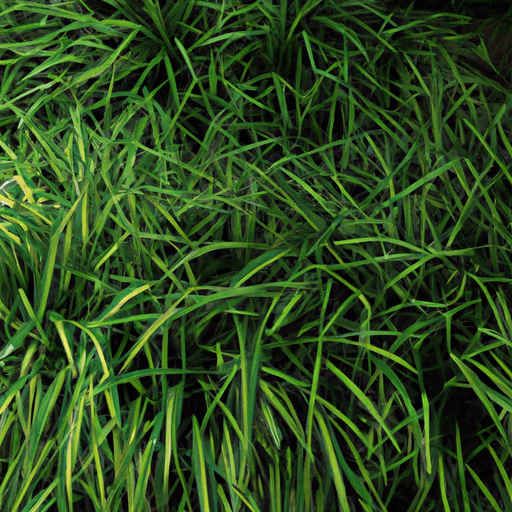Dwarf mondo grass is a versatile and low-maintenance ground cover that thrives in various conditions. It spreads slowly through underground runners, but dividing it can speed up the process.
This plant prefers shady conditions but can tolerate some sun if watered regularly. It is not suitable as a grass substitute in drier climates and needs well-drained, humusy soil. With its salt-tolerance, dwarf mondo grass is perfect for seaside communities.
Regular watering, proper trimming, and protection from extreme weather conditions are essential for its care.
Light and Soil Requirements
Dwarf mondo grass is a versatile ground cover that thrives in shady conditions and can handle some sun with regular watering. It is commonly used as an edging plant in warmer zones, although it can tolerate shade with irrigation. However, it is not recommended as a grass substitute in drier climates.
In terms of soil, dwarf mondo grass prefers well-drained and humusy soil. It is also salt-tolerant, making it a great choice for seaside communities. This grass thrives in quality loam and benefits from compost enrichment.
Moreover, dwarf mondo grass is a suitable option for roadside planting. Overall, with the right sun exposure and suitable soil types, dwarf mondo grass can be a practical and attractive ground cover option.
Watering and Moisture
Regular monitoring of soil moisture is necessary to maintain optimal watering conditions for the plant. Preventing root rot and maintaining optimal soil moisture are crucial for the health and vitality of dwarf mondo grass. Soil should be consistently moist, but not soggy, as excessive water can lead to root rot.
It is important to avoid overwatering and to monitor the soil moisture regularly. One way to prevent root rot is by ensuring that the grass receives the right amount of water. Compost can help balance moisture retention and drainage, providing a healthy environment for the grass.
Temperature and Hardiness
Gardeners in colder climates should be aware that dwarf mondo grass is not cold-hardy and may not survive in zone 5 and colder. This grass thrives in the warm temperatures of the southeastern U.S. and lacks the cold tolerance required for northern gardeners. It prefers a climate that is not extremely hot, making it a suitable choice for those in the southeast.
When selecting suitable zones for planting dwarf mondo grass, it is important to consider the temperature and hardiness requirements of the plant. By understanding its cold tolerance and suitable zones, gardeners can make informed decisions about where to grow this grass and ensure its successful growth and longevity in their garden.
Types of Mondo Grass and Importance of Berries
Berries are essential for propagating the plant from seed, and they are attractive and often hidden in the foliage.
Mondo grass, with its various types and sizes, offers a range of options for gardeners. From the 9 to 12 inches tall black mondo grass to the 1 to 2 inches tall Ophiopogon japonicus Gyoku-ryu, there is a mondo grass to suit any garden.
These berries play a crucial role in the plant’s reproductive cycle. To propagate mondo grass from seeds, gardeners can collect the berries and remove the seeds. The seeds can then be sown indoors in a well-drained soil mix. Adequate moisture and light are essential for successful germination.
With proper care and patience, gardeners can enjoy the beauty of mondo grass in their indoor spaces.
Tips and Benefits of Dwarf Mondo Grass
Mulching can help retain moisture and control weed growth, enhancing the overall health and appearance of the landscape.
When it comes to dwarf mondo grass, there are several benefits and best practices to consider. First, this grass adds a lush and vibrant green color to any landscape, making it a beautiful ground cover option. It is also low-maintenance and can tolerate a variety of soil conditions.
Dwarf mondo grass is resistant to pests and diseases, which means less worry for homeowners. Additionally, it helps prevent soil erosion and weed growth, keeping the landscape looking neat and tidy.
To maintain dwarf mondo grass, it is important to regularly trim the grass to maintain a neat appearance, divide the plant every few years to prevent overcrowding, remove any dead or yellowing foliage, protect the grass from extreme weather conditions, and apply a slow-release fertilizer during the growing season for optimal growth.
Frequently Asked Questions
How Often Should Dwarf Mondo Grass Be Divided?
Dwarf mondo grass should be divided every few years to prevent overcrowding and promote healthy growth. This is an important step in dwarf mondo grass propagation and helps maintain a neat appearance in the landscape.
Can Dwarf Mondo Grass Be Grown in Containers?
Yes, dwarf mondo grass can be grown in containers. It is important to choose the best soil for optimal growth. Use a well-drained soil mix and ensure the container has good drainage. Regular watering is necessary to maintain moisture levels.
What Is the Recommended Spacing for Planting Dwarf Mondo Grass?
Spacing recommendations for planting dwarf mondo grass depend on the desired coverage. Generally, a spacing of 6-8 inches between plants is recommended. To propagate dwarf mondo grass, collect and sow the berries that form after flowering.
Does Dwarf Mondo Grass Attract Any Beneficial Insects or Wildlife?
Dwarf mondo grass can attract beneficial insects and wildlife to the garden. It serves as a habitat for pollinators like bees and butterflies, while also providing shelter for small animals like birds and insects.
Is Dwarf Mondo Grass Deer Resistant?
Dwarf Mondo Grass is not deer resistant. It requires protection from deer in order to thrive. However, when used in landscaping, it can be paired with deer-resistant companion plants for a visually appealing and practical garden design.







